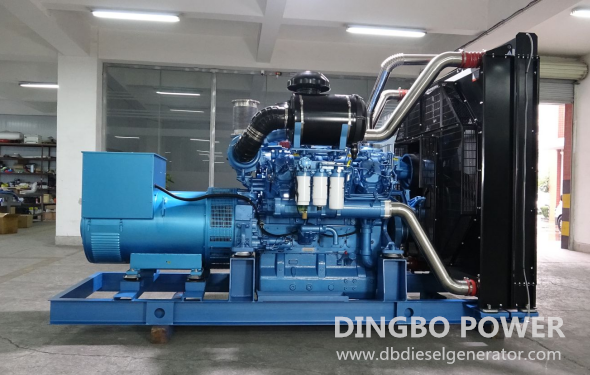dingbo@dieselgeneratortech.com
+86 134 8102 4441

- Home
- Products
- About Us
- Service
- News
- Technical Support
- Contact Us
dingbo@dieselgeneratortech.com
+86 134 8102 4441
May. 17, 2025
Diesel generator sets can be used for daily power generation and backup power in households, offices, and small to large enterprises. The cooling methods for diesel engines are categorized into water cooling and air cooling. Water-cooled diesel engines typically consist of components such as a water pump, radiator, fan, and thermostat, using water as the medium to transfer heat generated by the engine. Below, we will explore the working principle of water cooling in diesel generators and the correct methods for draining water.
The cylinder heads and cylinder blocks of diesel engines are designed with water jackets. Coolant is pressurized by the water pump and directed into the cylinder water jackets via a distribution pipe. As the coolant flows through the jackets, it absorbs heat from the cylinder walls, causing its temperature to rise. The heated coolant then flows into the cylinder head water jacket and moves through the thermostat and radiator inlet pipe into the radiator. Simultaneously, the fan draws air through the radiator core, dissipating heat from the coolant into the atmosphere and lowering its temperature. The cooled coolant is then pressurized again by the water pump and recirculated into the cylinder water jackets. This continuous cycle ensures effective cooling as the diesel engine operates at varying speeds.
To ensure uniform cooling across all cylinders in multi-cylinder diesel engines, a distribution pipe or dedicated water distribution chamber is typically integrated into the engine block. The distribution pipe, a metal tube with strategically spaced outlets, ensures that rear and front cylinders receive similar cooling intensity by adjusting the distance from the water pump.

The water cooling system is also equipped with a water temperature sensor and gauge. The sensor, installed on the cylinder head outlet pipe, transmits coolant temperature data to the gauge, allowing operators to monitor the system. Normal operating temperatures range between 80–90°C.
Important note on coolant:
Diesel engines require clean, soft water for cooling. Hard water contains minerals that can precipitate under high temperatures, forming scale deposits in pipes, water jackets, and radiator cores. This reduces heat dissipation efficiency, risks engine overheating, accelerates wear on the water pump impeller and casing, and may clog the radiator. To soften hard water, add 0.5–1.5g of sodium carbonate (or 0.5–0.8g of sodium hydroxide) per liter of water. Allow impurities to settle, then use the clarified water for the cooling system.
1. Timing after shutdown: Drain water 15 minutes after shutdown in cold environments. Immediate drainage can cause component deformation (e.g., cylinder heads) due to rapid temperature differences between the engine and surroundings.
2. Observe drainage flow: Monitor the water flow during drainage. If flow is uneven or restricted, impurities may be blocking the outlet. Disassemble the drain port to allow direct drainage. If blockage persists, use a thin, rigid wire (e.g., steel) to clear the passage.
3. Residual water removal: After draining, start the generator and let it run for a few minutes. Residual water in long pipes will be expelled by vibrations, preventing freeze damage to components like cylinder head water plugs.
4. Drain valve position: Leave the drain valve open after drainage to ensure no residual coolant remains trapped in the system.
5. Open radiator cap during drainage: Always open the radiator cap to prevent vacuum formation, which slows or halts drainage. Incomplete drainage in winter risks component freezing and cracking.
6. Avoid draining at high temperatures: If the engine is hot, do not shut down and drain immediately. Remove the load first and let it idle until the cylinder temperature drops to 40–50°C. Sudden cooling of hot surfaces (e.g., cylinder blocks, heads) can cause thermal stress cracks.
7. Post-drainage idling in winter: In freezing conditions, idle the engine for a few minutes after drainage. This ensures residual moisture in components like the water pump evaporates, preventing ice formation and pump seal damage.
By following these guidelines, you can ensure safe and efficient operation of your water-cooled diesel engine generator while extending its service life.
Don’t hesitate to reach out for any further information or assistance regarding to power generators. Contact us at dingbo@dieselgeneratortech.com, and we will gladly help you.
Quicklink
Mob.: +86 134 8102 4441
Tel.: +86 771 5805 269
Fax: +86 771 5805 259
E-mail: dingbo@dieselgeneratortech.com
WhatsApp: +86 134 8102 4441
Add.: No. 10 Kechuang Road, High tech Zone, Nanning, Guangxi, China